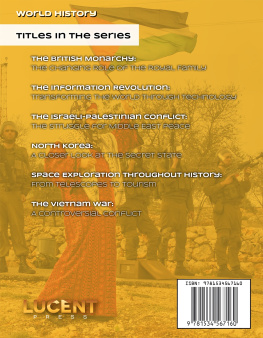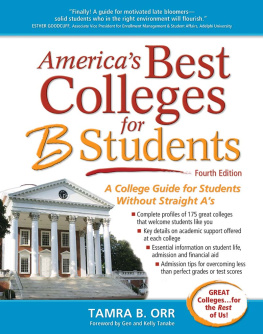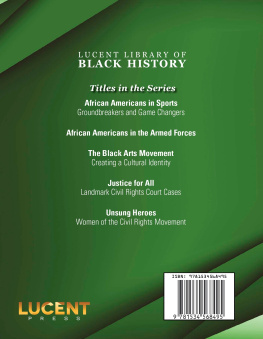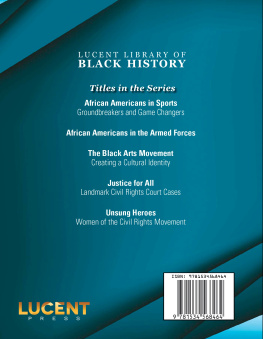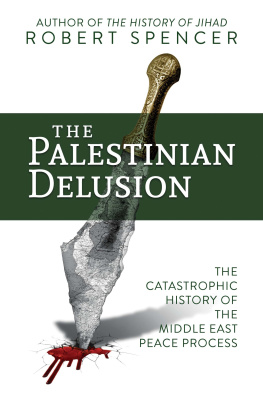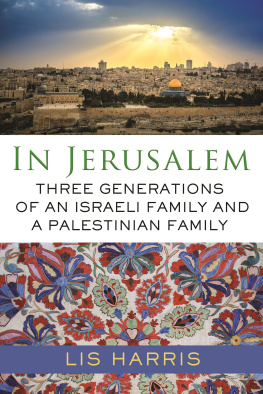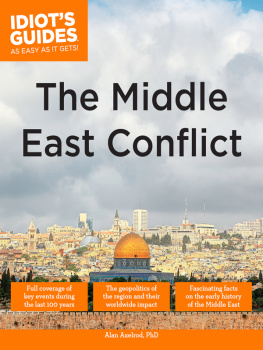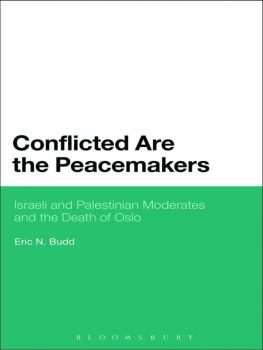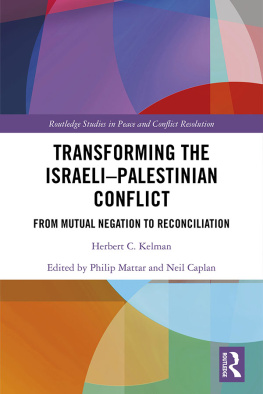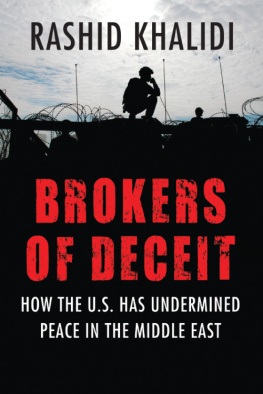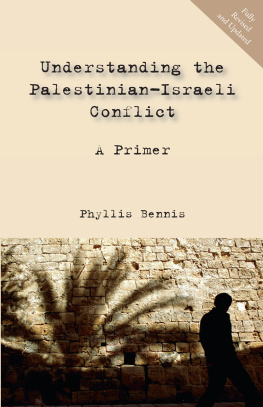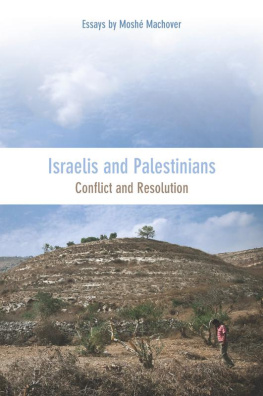
Published in 2020 by
Lucent Press, an Imprint of Greenhaven Publishing, LLC
353 3rd Avenue
Suite 255
New York, NY 10010
Copyright 2020 Greenhaven Press, a part of Gale, Cengage Learning
Gale and Greenhaven Press are registered trademarks used herein under license.
All new materials copyright 2020 Lucent Press, an Imprint of Greenhaven Publishing, LLC.
All rights reserved. No part of this book may be reproduced in any form without permission in writing from the publisher, except by a reviewer.
Designer: Andrea Davison-Bartolotta
Editor: Diane Bailey
Library of Congress Cataloging-in-Publication Data
Names: Orr, Tamra, author.
Title: The Israeli-Palestinian conflict : the struggle for Middle East peace / Tamra B. Orr.
Description: New York: Lucent Press, 2020. | Series: World history | Includes bibliographical references and index.
Identifiers: LCCN 2018056985 (print) | LCCN 2018058692 (ebook) | ISBN 9781534567887 (eBook) | ISBN 9781534567870 (pbk. book) | ISBN 9781534567160 (library bound book)
Subjects: LCSH: Arab-Israeli conflict. | Palestinian Arabs--Politics and government. | Arab-Israeli conflict--Peace.
Classification: LCC DS119.7 (ebook) | LCC DS119.7 .O757 2020 (print) | DDC 956.9405/5--dc23
LC record available at https://lccn.loc.gov/2018056985
Printed in the United States of America
CPSIA compliance information: Batch #BS19KL: For further information contact Greenhaven Publishing LLC, New York, New York at 1-844-317-7404.
Please visit our website, www.greenhavenpublishing.com. For a free color catalog of all our high-quality books, call toll free 1-844-317-7404 or fax 1-844-317-7405.
Contents
Foreword
H istory books are often filled with names and dateswords and numbers for students to memorize for a test and forget once they move on to another class. However, what history books should be filled with are great stories, because the history of our world is filled with great stories. Love, death, violence, heroism, and betrayal are not just themes found in novels and movie scripts. They are often the driving forces behind major historical events.
When told in a compelling way, fact is often far more interestingand sometimes far more unbelievablethan fiction. World history is filled with more drama than the best television shows, and all of it really happened. As readers discover the incredible truth behind the triumphs and tragedies that have impacted the world since ancient times, they also come to understand that everything is connected. Historical events do not exist in a vacuum. The stories that shaped world history continue to shape the present and will undoubtedly shape the future.
The titles in this series aim to provide readers with a comprehensive understanding of pivotal events in world history. They are written with a focus on providing readers with multiple perspectives to help them develop an appreciation for the complexity of the study of history. There is no set lens through which history must be viewed, and these titles encourage readers to analyze different viewpoints to understand why a historical figure acted the way they did or why a contemporary scholar wrote what they did about a historical event. In this way, readers are able to sharpen their critical-thinking skills and apply those skills in their history classes. Readers are aided in this pursuit by formally documented quotations and annotated bibliographies, which encourage further research and debate.
Many of these quotations come from carefully selected primary sources, including diaries, public records, and contemporary research and writings. These valuable primary sources help readers hear the voices of those who directly experienced historical events, as well as the voices of biographers and historians who provide a unique perspective on familiar topics. Their voices all help history come alive in a vibrant way.
As students read the titles in this series, they are provided with clear context in the form of maps, timelines, and informative text. These elements give them the basic facts they need to fully appreciate the high drama that is history.
The study of history is difficult at timesnot because of all the information that needs to be memorized, but because of the challenging questions it asks us. How could something as horrible as the Holocaust happen? Why would religious leaders use torture during the Inquisition? Why does ISIS have so many followers? The information presented in each title gives readers the tools they need to confront these questions and participate in the debates they inspire.
As we pore over the stories of events and eras that changed the world, we come to understand a simple truth: No one can escape being a part of history. We are not bystanders; we are active participants in the stories that are being created now and will be written about in history books decades and even centuries from now. The titles in this series help readers gain a deeper appreciation for history and a stronger understanding of the connection between the stories of the past and the stories they are a part of right now.
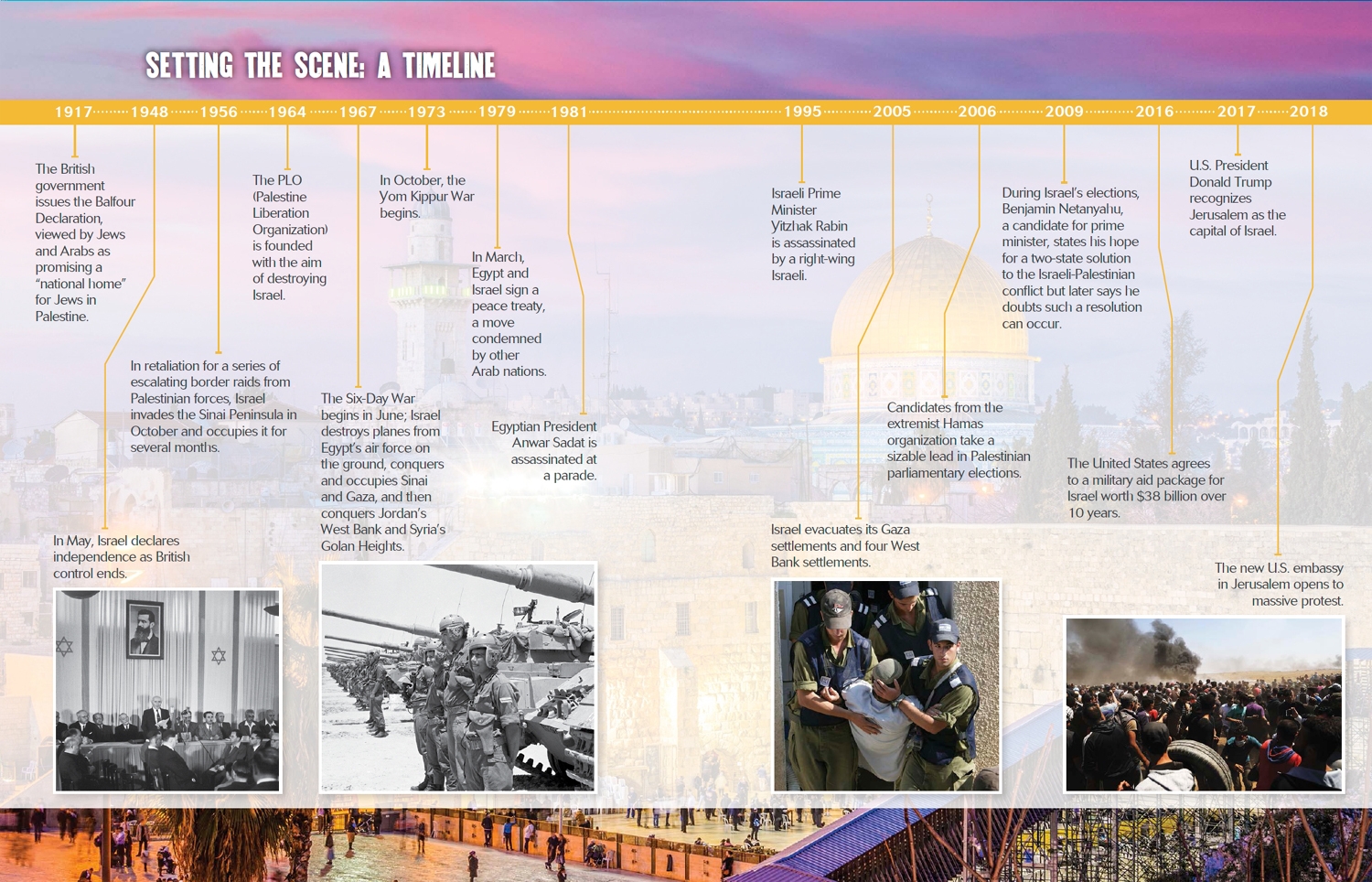
INTRODUCTION
A LONG-STANDING RIGHT
T he struggle to control land often leads to war, and for centuries, countries all over the world have fought each other in the quest to protect their existing land or obtain new territory. Much of the time, these areas are tens of thousands of square miles, often in multiple nations. When it comes to the battle between Jewish Israelis and Arab Palestinians, however, the land at the root of a decades-long conflict is about the size of New Jersey, one of the United States smallest states at just 8,723 square miles (22,592 sq km). Each side in this battle believes that the land in question historically and rightfully belongs to them, and they are willing to fightand diefor control of it. Over the years, the Israeli-Palestinian conflict has killed thousands and injured many more. While some residents long for peace, others refuse to give up land to their enemies and vow to keep fighting. The conflict has created such intense hatred between the two groups that a lasting solutioneven in the form of an imperfect compromise remains elusive.
Disagreement, Differences, and Destruction
The Israeli-Palestinian conflict is complicated, but at its core are two groups of people who both desperately want to live in the same place, a place they consider their ancestral homeand one that many of them believe cannot be divided or shared with others.
It pits citizens of the State of Israel, first created in 1948 by a European mandate, against Arab Palestinians who also live in the area. Palestinians saw the European decision as arbitrary and biased, and as a result, have always considered Israels creation to be illegitimate. Arabs and Israelis fought a series of wars, and in the process, the Israelis captured additional land that was not initially part of their modern boundaries. Fearing more external threats, they retained the land for security purposes, believing it was part of their destiny as a people.
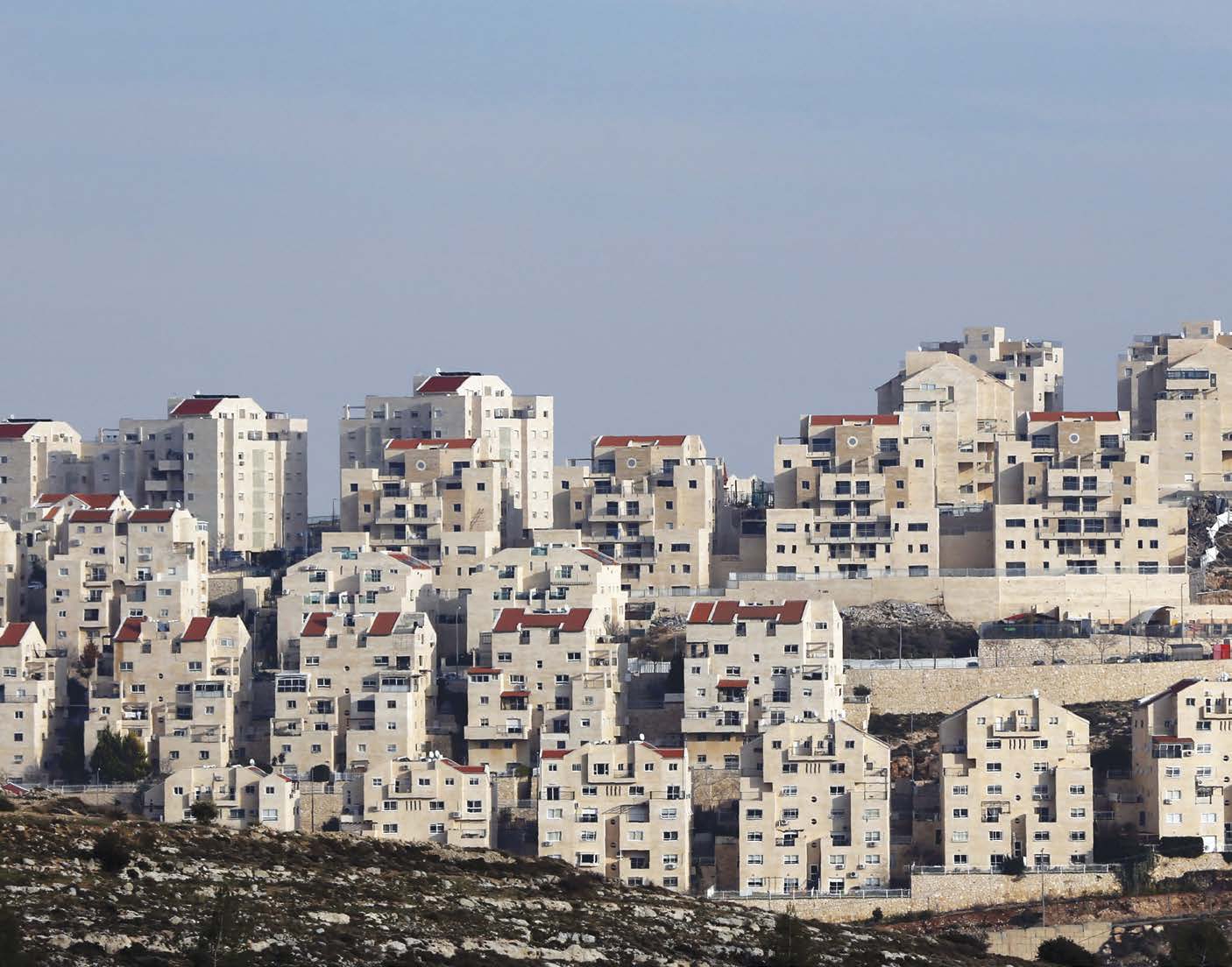
Israelis have established settlements in territories that Palestinians believe belong to them. This one, Efrat, is located in the West Bank, which is primarily inhabited by Palestinians but is under Israeli control.

